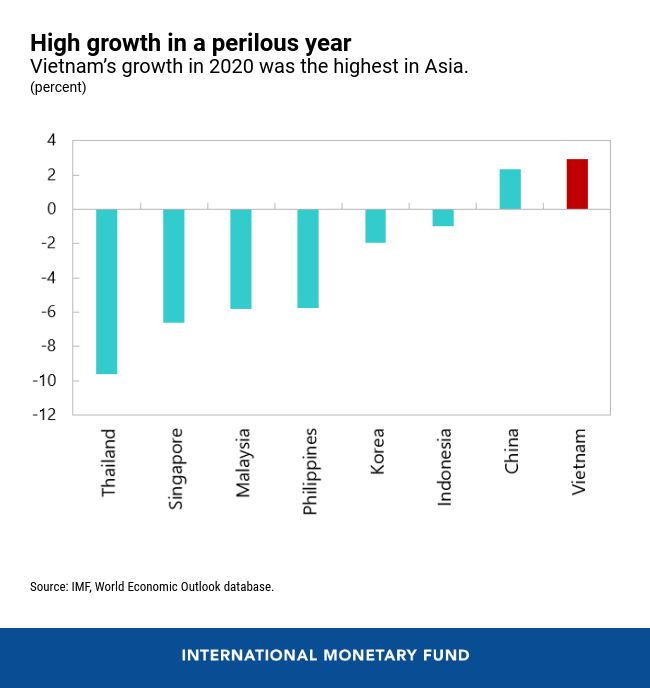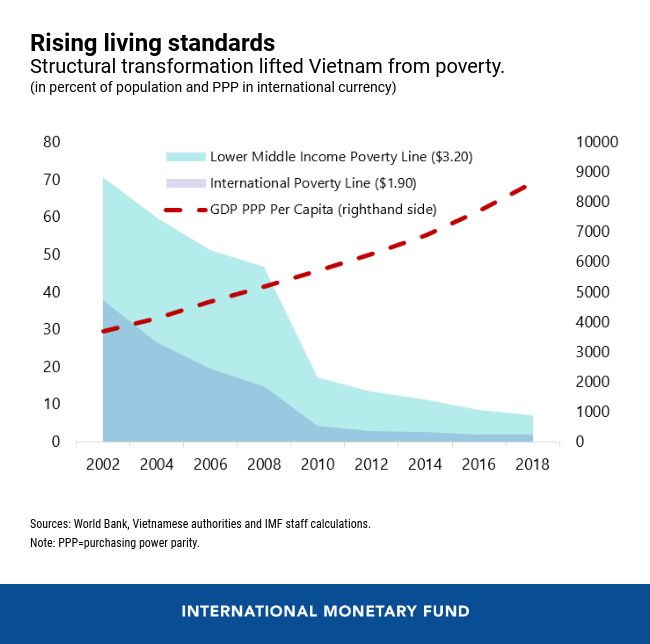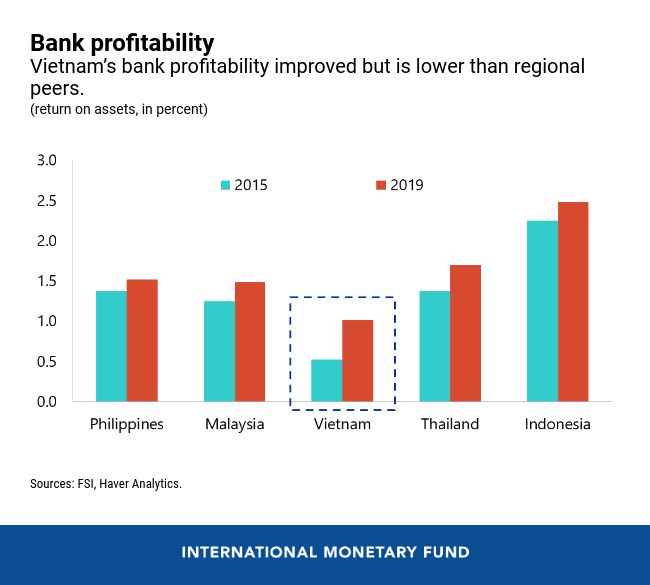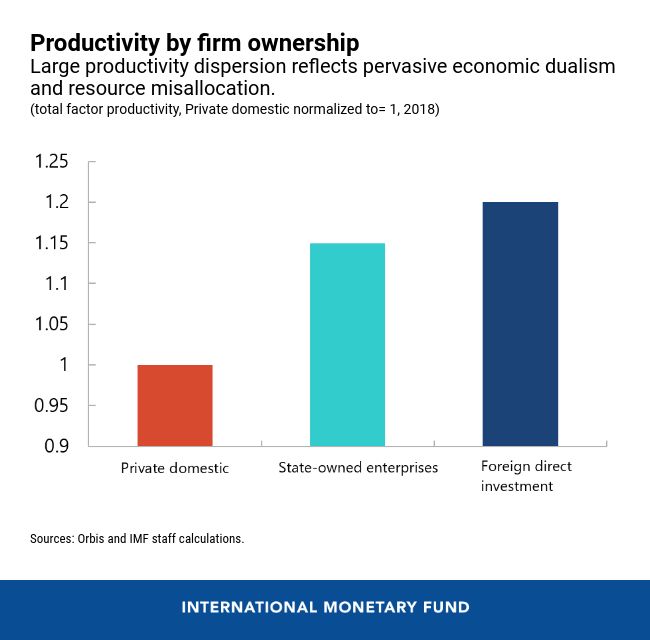Despite COVID-19, Vietnam’s economy has remained resilient, expanding by 2.9 percent in 2020-one of the highest growth rates in the world-and growth is projected to be 6.5 percent in 2021, thanks to strong economic fundamentals, decisive containment measures and well-targeted government support, according to the IMF’s latest annual assessment of the country’s economy.
The following charts illustrate Vietnam’s experiences during the pandemic and policy priorities going forward.
- The pandemic hit the economy hard, but Vietnam has taken decisive steps to limit both the health and economic fallout. Swift introduction of containment measures, combined with aggressive contact tracing, targeted testing, and isolation of suspected COVID-19 cases, helped keep recorded infections and death rates notably low on a per capita basis. Successful containment, along with timely policy support, also helped limit the economic fallout and the size of the emergency response package. In 2020, the Vietnamese economy expanded by 2.9 percent, one of the highest growth rates in the world, backed by the early rebound of domestic activities and robust export performance, particularly higher-tech exports of electronics as people around the world worked from home.
- Vietnam entered the pandemic with solid economic fundamentals and policy buffers, although some structural challenges remain to be addressed. Since the advent of market-oriented “Doi Moi” reforms in 1986, Vietnam went from being from one of the poorest countries in the world to one with lower middle-income status. Structural transformation from agriculture to a modern economy based on foreign direct investment-led manufacturing and the emphasis on “leaving no one behind” boosted living standards. Strong foreign investment and current account surpluses strengthened external resilience. The health of the banking system improved, with higher profitability, liquidity, and fewer non-performing loans than in the past, although weaknesses remained. And the country made considerable progress in consolidating public finances prior to COVID-19. The build-up of these fiscal, external, and financial buffers prior to the pandemic made Vietnam more resilient to the shock. However, despite these favorable outcomes and ongoing structural reforms, there is still significant room to boost productivity and improve economic resilience.
- Macroeconomic policies will need to remain supportive in 2021 to ensure a resilient and inclusive recovery. Vietnam’s labor market was hit hard in the second quarter of 2020, particularly the sizable informal sector with limited access to social insurance. While a subsequent rebound of informal employment occurred, weakness persist. Policies in the near-term should center on sustaining employment while fostering a reallocation of resources. This can be achieved by, for example, using hiring subsidies and active labor market policies to incentivize job training. Coverage of the existing social safety net should be permanently scaled up and its efficiency improved. Over time, policies should aim at reducing labor informality by improving labor skills and lowering hiring/firing costs for formal workers, and encouraging firm formalization.
- A sustained recovery also hinges on safeguarding financial stability. Corporates in Vietnam entered the crisis with relatively weak balance sheets, particularly small and medium enterprises that dominate the hardest hit sectors. COVID-19 has further deteriorated their liquidity and solvency positions, raising financial stability concerns through bank exposures. Monetary, fiscal, and financial sector policies implemented by the government have helped mitigate the immediate risk of a surge in corporate defaults and mass layoffs. Such support should be better targeted to illiquid but viable firms until the recovery is on firmer ground. Continued strong supervision, together with timely efforts to address problem loans and strengthen regulatory and supervisory frameworks, will help address financial system risks.
- More decisive reforms are needed to make the most of Vietnam’s considerable growth potential. This would require tackling the sources of pervasive low productivity. Priority should be given to improving the business environment and ensuring a level playing field for small and medium-sized enterprises, with reforms geared towards reducing regulatory burden faced by firms, improving their access to resources, enhancing governance and access to technology and innovation, and reducing skills mismatches. Reforms in these areas would also help Vietnam reap greater benefits from participation in global value chains in the post-pandemic world.
Public Release.
More on this here.





